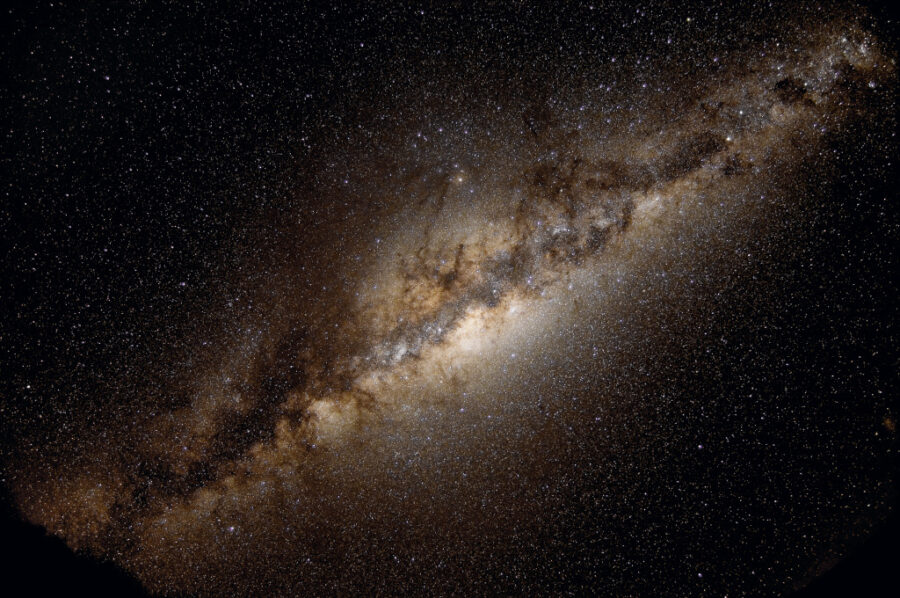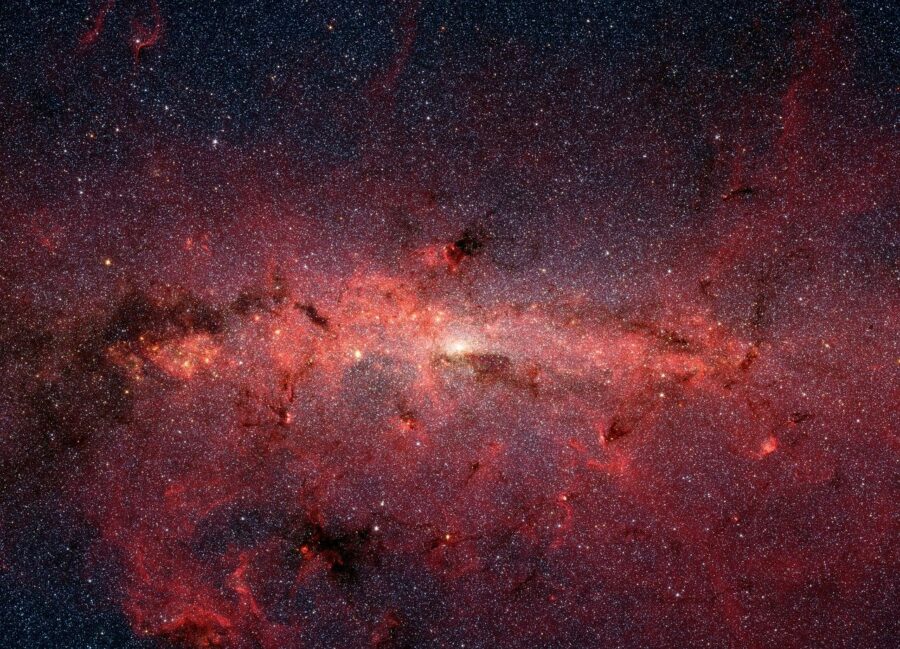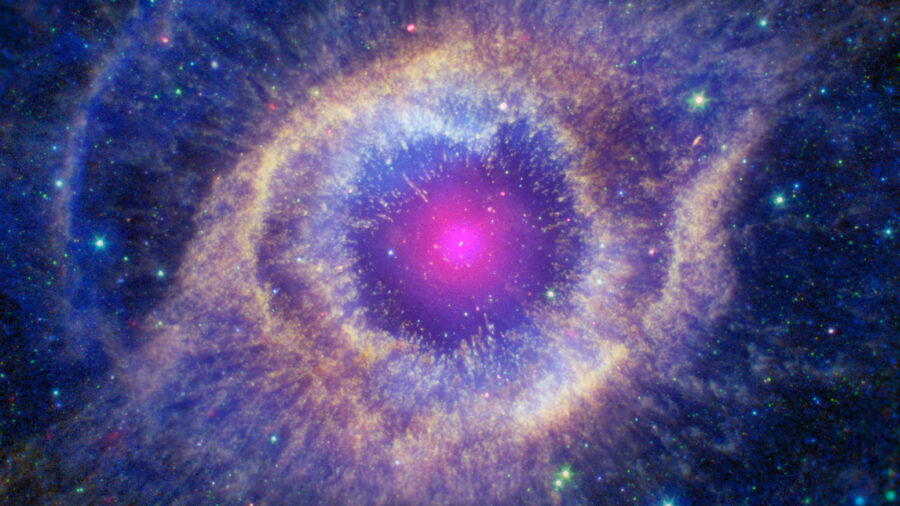Milky Way Twin Galaxy Discovered At Edge Of Universe

The Milky Way might want to change its name to the Twix galaxy because now there are two of them. As EL Pais reports, Astrophysicist Luca Costantin was looking at images from the James Webb Space Telescope when he discovered that our solar system had a twin. Dubbed ceers-2112, Constantin’s discovery was published Wednesday in the science journal Nature.
The astrophysicist was on vacation in the Spanish region of Cantabria last summer when he decided to open up his laptop and take a quick peek at his emails. “I have a bad habit of looking at my email for an hour before going to sleep, even on vacation,” admits Constantin. One of his emails contained new pics from the JWS Telescope, one of which was the Milky Way’s twin galaxy ceers-2112.
The Twin Galaxy Existed Almost 12 Billion Years Ago

Our universe is around 13.8 billion years old. A study by Costantin reveals that galaxies like ceers-2112 AKA twin galaxies to our Milky Way, existed 11.7 billion years ago when the universe was roughly 15% of its current age. The ultrasensitive James Webb Space Telescope was able to capture light from back when the cosmos was still in its infancy.
“It’s like seeing our galaxy back in time,” said the 33-year-old Italian researcher. Fellow astrophysicist Pablo G. Perez Gonzalez compares Costantin’s discovery to a scenario in which a 100-year-old man who has never seen himself in the mirror suddenly gets a letter from an unknown twin sister containing a self-portrait from when he was 15 years old.
Ceers-2112 Is Our Twin Galaxy

Ceers-2112 is the most distant Milky Way-like galaxy currently known to science. The twin galaxy can be observed in a region of space located between the constellations Ursa Major and Boyero—a dotted line that resembles a human and is home to the brightest star in the night sky, Arthur. The stars of ceers-2112 have a combined mass equivalent to 3.9 billion solar masses. That means that ceers-2112 has the same dimensions as the Milky Way did over 11 billion years ago.
The Milky Way And Spiral Galaxies

The Milky Way, much like similar spiral galaxies, has an elongated bar-shaped structure in its central region. About 15 years ago, the Hubble Space Telescope—a primitive precursor to the James Webb Telescope launched all the way back in 1990—gave researchers the ability to study over 2,000 similar galaxies.
NASA astronomers at the time determined that the bars were a final episode in the evolution of spiral galaxies formed when the orbits of stars become unstable and stray from their usual circular path. As such, the bars contain large amounts of built-up gases from which new stars can form. Oddly, the relatively young ceers-2112—the Milky Way’s twin galaxy was only 2.1 billion years old when it emitted the light that Costantin observed—also has one of these bars in its center.
There’s Plenty More Twin Galaxies To Discover

Ceers-2112 joins SPT0418-47, another of the Milky Way’s twin galaxies discovered there years ago. SPT0418-47 was stable when the universe was only 1.4 billion years old. The difference between the two Xerox galaxies is that despite being around the same age, SPT0418-47 doesn’t have a bar in its center. “The Milky Way can have an infinite number of twins, and we observe each one at a different age of the universe.” said Perez Gonzalez.
Discovering Distant Galaxies Tells Us More About Our Home Galaxy

Perez Gonzalez admitted that by studying the Milky Way’s various twin galaxies, astronomers could finally “understand the history of the evolution of the Milky Way.”
Supposedly, the galaxy ceers-2112 is named after the international project Cosmic Evolution Early Release Science, but we have a sneaking suspicion that one of the astronomers involved with choosing the name is a fan of the band Rush.












